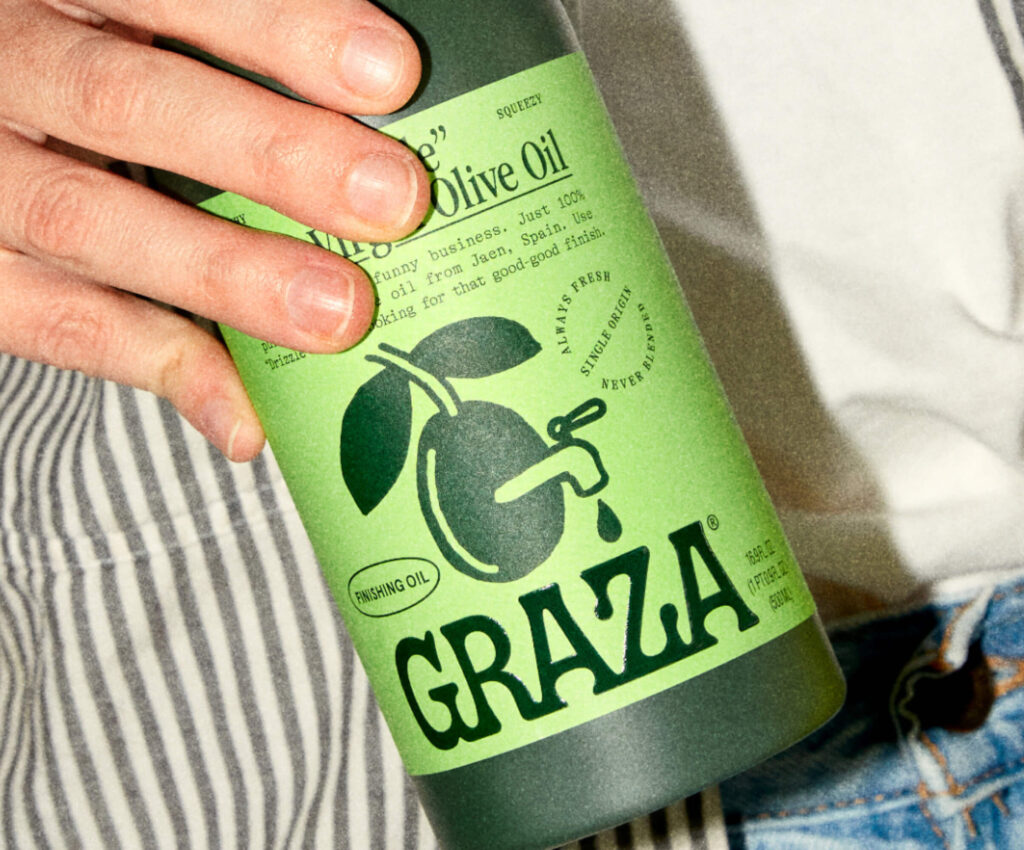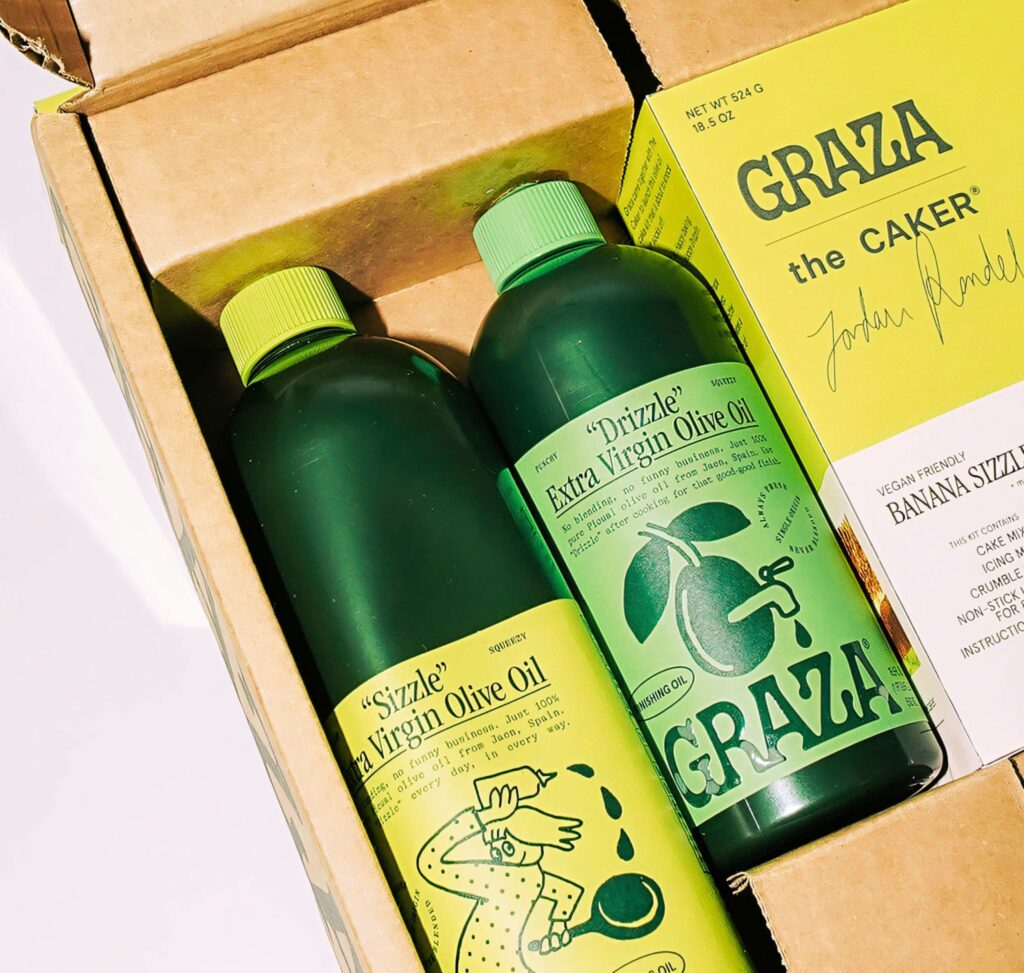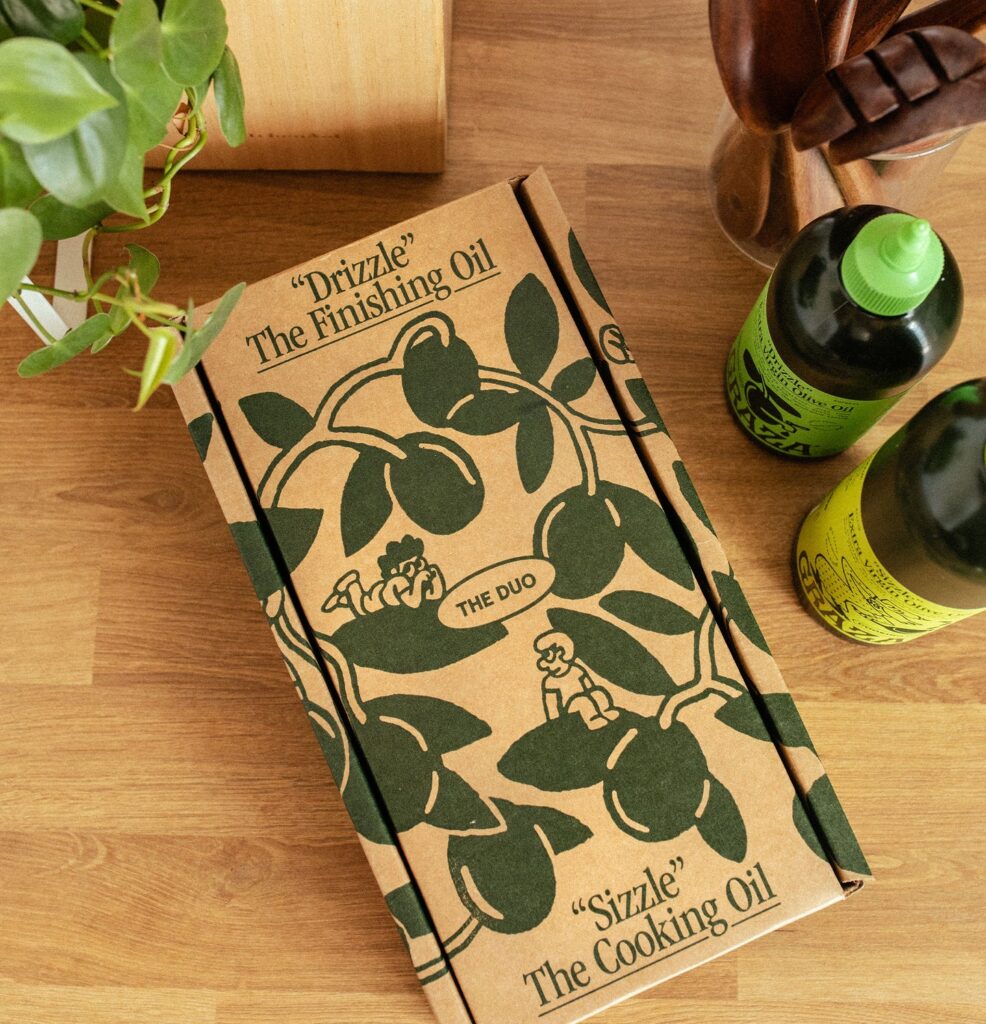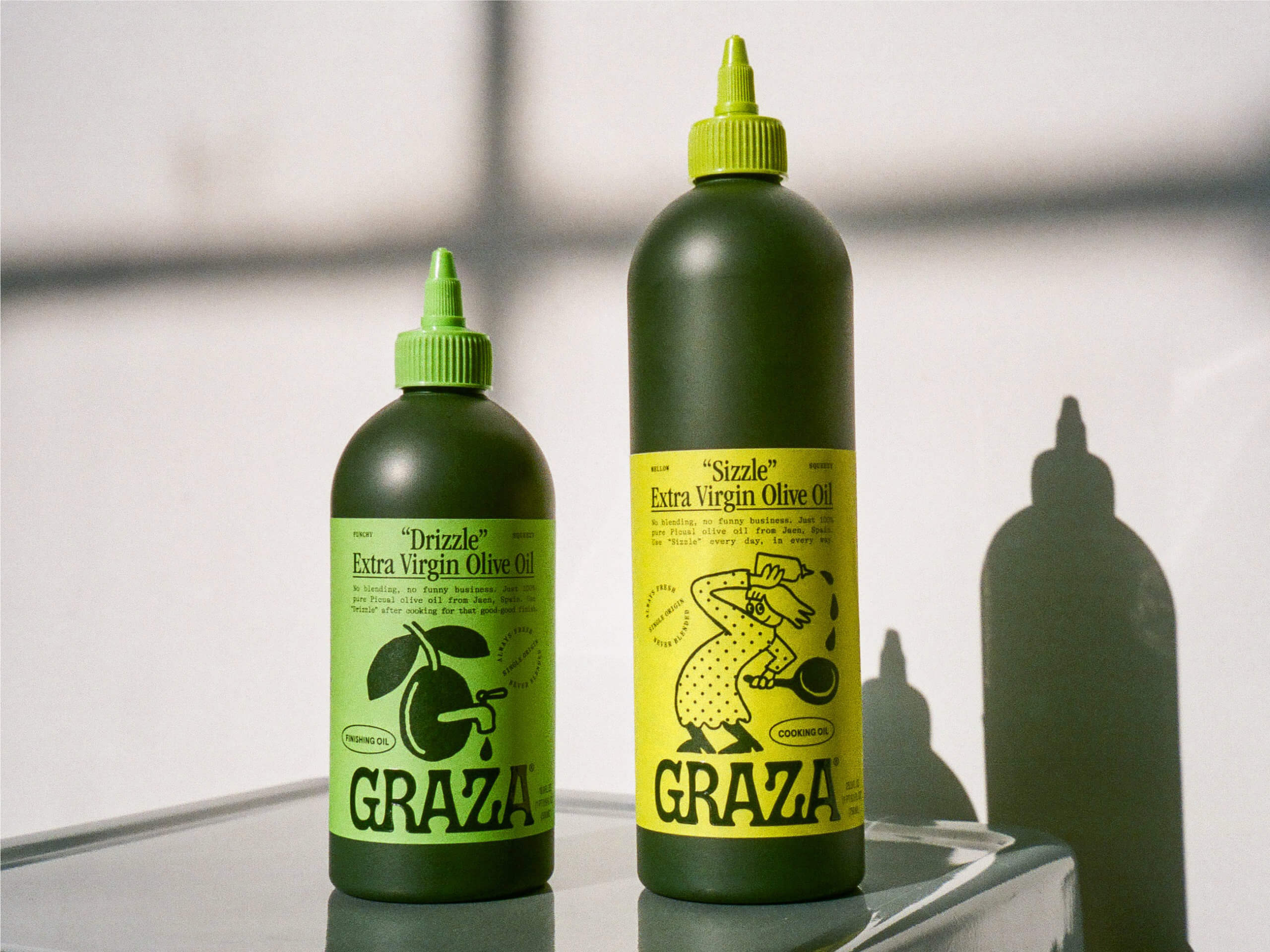Crowded market. Words that should send entrepreneurs running for clearer waters. Conventional wisdom says to stay away from saturated spaces where success is rare. But the free markets have their own peculiar magnetism, and despite the odds, its forces constantly push new challengers looking to upset incumbents to the fore. Winning in these circumstances is a rare occurrence, hence why they make for such interesting stories and juicy analysis. And when the answer to the question “how did they do it?” is largely great strategy, they get my full attention.
The power of great branding is most evident when it’s applied to a commodity. Why? Because in categories where the product is largely undifferentiated–flour, water, or in this case, olive oil–it’s the brand that creates differentiation in the eyes and hearts of consumers. It’s brand 101 – by imbuing a commodity with a personality, narrative, and a design aesthetic that resonates, brands shift the buying decision from a purely functional choice (lowest price for acceptable quality) to an emotional one (trust, aspiration, self-expression). Graza doesn’t just sell olive oil – they sell a fun, cooler way to cook and finish dishes.
Graza Olive Oil
byu/macncheese323 inFoodieSnark
The U.S. olive oil market, which hovers around an estimated $2–3 billion in annual sales, is dominated by established names like Bertolli, Pompeian, Goya, and Filippo Berio. Despite healthy growth driven by increasing consumer interest in the Mediterranean diet, key challenges persist: ongoing concerns about product authenticity, consumer confusion over labeling (e.g., extra virgin vs. virgin), and a highly fragmented supply chain, to name a few.
Graza launched in January 2022 with a mission to shake up this well-worn sector by emphasizing freshness, traceability, and design-forward packaging. They also brought about a completely fresh brand identity approach to the space with bold, bright colors and a cartoonish look that sharply contrasts the traditional vintage label aesthetic that defines the category.

On launch day, Graza sold $100,000 of product through their website and were sold out right away. On day two, Whole Foods reached out and Graza was in the aisles shortly afterwards. Since then, sales have skyrocketed, from $4.3 million in 2022, to $19.7M in 2023, and a projected $48M for 2024.
Olive oil reimagined for the modern consumer
Turning a basic pantry staple into something people actively seek out and proudly display on their counters isn’t just luck. This is the result of proper brand strategy and implementation. Olive oil has been sitting there, practically begging for disruption. Think about it: endless rows of nearly identical glass bottles, all shouting the same tired claims about being ‘extra virgin’ and ‘first cold pressed.’ The category basically became visual white noise, with brands competing mainly on heritage and price points.
Then Graza shows up and rewrites the playbook. To start off, they didn’t just create another olive oil brand – they fundamentally changed how people at home interact with the product. The squeeze bottle offers a series of interesting benefits. For one, it immediately reinforces the notion that this olive oil is different, and unlike the rest. It’s also a statement about accessibility and everyday use. Professional chefs often rely on squeeze bottles behind the scenes because they allow for precise control over oil distribution. By adopting this form factor, Graza essentially brings an insider’s trick into the home kitchen, making it easy for everyday cooks to control portions, minimize spills, and achieve that elevated, plated finish.
Sizz & Drizz
Olive oil is the kind of product where some consumer education is warranted. Single origin vs. blend, extra virgin vs. virgin, first cold pressed; you get the picture. In this education process, a consumer may learn that they should not be using their pricey, premium olive oil for cooking as heat will degrade the delicate flavors and aromas that make premium olive oils special. At the same time, consumers are increasingly wary of what they put into their bodies, so it’s not like they would purchase just any cheap oil for cooking. And herein lies another great strategic move from the brand. Two products, one for each job. Drizzle, designed for finishing dishes, and Sizzle, designed for cooking. The simplicity is giving me goosebumps as I type this.
Not your grandma’s olive oil
Their bold design choices aren’t just aesthetic–they feel more like a middle finger to category conventions–no tuscan sunsets, no ornate script, no gold foil. Instead, Graza opts for a punchy, modern look that practically leaps off the shelf, leaving behind any whiff of stuffiness.

The bright, minimalist palette feels playful yet intentional; every design element is meant to communicate a fresh take on a centuries-old staple.

But it’s more than visual flair–it’s brand personality. Graza’s tone is confident but never intimidating, achieving a sort of “everyday premium” feel. The straightforward naming conventions (“Drizzle” and “Sizzle”) do away with the category’s usual jargon and invite people to see olive oil for what it is: a versatile kitchen essential to be used generously, not hoarded.

In a space so deeply rooted in legacy and heritage, reimagining a product can feel risky. Yet Graza proves that sometimes, tradition is best honored by daring to break it–especially when it results in a fresh experience for consumers. I like that their approach is not about discarding the craft or quality that makes olive oil beloved, but about ditching the trappings that no longer serve the modern consumer. While not just any brand can pull off this kind of clean break, Graza’s bold, contemporary spin on an age-old staple is showing, for now, that respecting the past and embracing the future aren’t mutually exclusive, and that sometimes, pushing category boundaries is the most authentic way forward. It’s also really fun.

Social media as brand rocket fuel
Connect with millions of people daily? Check. Instant stage to showcase brand stories, connect with audiences in real-time, turn occasional buyers into devoted fans? Check. Direct feedback loops, viral reach, near-endless opportunities to experiment with content? Check. Social is a relentless accelerator, and though it can’t do it all on its own, it enables startups like Graza to go from obscurity to household name faster than ever before.
Make no mistake, brand building is still a long game that demands consistent, strategic effort. But social media serves as the ultimate accelerator, turning the traditional brand-building timeline on its head. It amplifies every touchpoint, speeds up word-of-mouth, and transforms customers into content creators. For brands like Graza, it’s not just another channel, it is rocket fuel for brand equity.
For the brand launch, Graza had an influencer-focused approach, and sent bottles to a wide array of culinary enthusiasts and content creators, igniting early buzz and a steady flow of user-generated content. This generated enough conversation for the brand to start interacting and created content opportunities to hype up their launch. Simultaneously, features in reputable outlets such as Eater, Food & Wine, and Bon Appétit bolstered the brand’s credibility among discerning foodies. When earned efforts are amplified on social, along with a robust creator/influencer play, it creates the perfect environment for the target audience to feel “this brand is everywhere.”
Brand partnerships were also part of Graza’s growth strategy. These partnerships serve as a powerful accelerator for new brands looking to solidify their positioning and gain instant credibility. At the same time, collaborations help established names remain dynamic and relevant in today’s fast-moving market. Capitalizing on the buzz around the US Open, Graza teamed up with Talenti to roll out an olive oil gelato truck in New York City—an unexpected fusion that drew crowds, sparked conversation, and gave both brands a fresh way to connect with consumers. Scroll through Graza’s social feed and you’ll find multiple partnerships since launch.
Getting it right
Breaking through market noise isn’t just about having a great product, although this is an important pre-requisite – plenty of excellent brands get overlooked despite their quality. What Graza proves is that today, market penetration demands both bold brand moves and social media mastery.
Legacy players like Bertolli, Pompeian, and Filippo Berio are sitting on over a century of heritage and quality, but they’re letting digital-first brands eat their lunch on social. Here’s the truth I share with every client: don’t look at your social media presence just as a marketing channel – instead, think about it as a real-time reflection of your brand’s relevance. In today’s market, that relevance is the difference between rapid category growth and becoming just another bottle in the aisle.

